The NVIDIA GeForce RTX 2070 Super & RTX 2060 Super Review: Smaller Numbers, Bigger Performance
by Ryan Smith on July 2, 2019 9:00 AM EST- Posted in
- GPUs
- GeForce
- NVIDIA
- Turing
- GeForce RTX
Meet the GeForce RTX 2070 Super & RTX 2060 Super
Taking a closer look at the RTX 2070 Super & RTX 2060 Super Founders Edition cards, there aren’t too many surprises to be found. Since we’re dealing with a mid-generation kicker here, NVIDIA has opted to stick with their original RTX 20 series reference designs for the new cards, rather than design wholly new boards. This has allowed them to get the new cards out relatively quickly, and to be honest there’s not a whole lot NVIDIA could do here that wouldn’t be superficial. As a result, the RTX 2070 Super and RTX 2060 Super are more or less identical to the RTX 2080 and RTX 2060 respectively.
| GeForce RTX 20 Series Card Compariaon | ||||||
| RTX 2070 Super Founders Edition |
RTX 2070 Super (Reference Specs) |
RTX 2060 Super Founders Edition |
RTX 2060 Super (Reference Specs) |
|||
| Base Clock | 1605MHz | 1605MHz | 1470MHz | 1470MHz | ||
| Boost Clock | 1770MHz | 1770MHz | 1650MHz | 1650MHz | ||
| Memory Clock | 14Gbps GDDR6 | 14Gbps GDDR6 | 14Gbps GDDR6 | 14Gbps GDDR6 | ||
| VRAM | 8GB | 8GB | 8GB | 8GB | ||
| TDP | 215W | 215W | 175W | 175W | ||
| Length | 10.5-inches | N/A | 9.0-inches | N/A | ||
| Width | Dual Slot | N/A | Dual Slot | N/A | ||
| Cooler Type | Open Air (2x Axial Fans) |
N/A | Open Air (2x Axial Fans) |
N/A | ||
| Price | $499 | $499 | $399 | $399 | ||
As I noted earlier, the Founders Edition cards themselves are now purely reference cards. NVIDIA isn’t doing factory overclocks this time around – the high reference clock speeds making that process a bit harder – so these cards are very straightforward examples of what the RTX 2070 Super and RTX 2060 Super can deliver in terms of performance. It also means that these cards no longer carry a price premium, with NVIDIA selling them at the $499 and $399 MSRPs respectively.
Starting with the RTX 2070 Super then, possibly the only material change is quite literally in the materials. NVIDIA has taken the 2080 reference design and given the center segment of shroud a reflective coating. This, along with the Super branding, are the only two visually distinctive changes from the RTX 2080 reference design. For better or worse, the reflective section is every bit the fingerprint magnet that you probably expect, so thankfully most people aren’t handling their video cards as much as hardware reviewers are.
In terms of cooling then, this means the RTX 2070 Super gets the RTX 2080’s cooler as well. At a high level this is a dual axial open air cooler, with NVIDIA sticking to this design after first introducing it last year. The open air cooler helps NVIDIA keep their load noise levels down, though idle noise levels on all of the RTX 20 series reference cards has been mediocre, and the new Super cards are no different. The fact that this reference design isn’t a blower means that the RTX 2070 Super isn’t fully self-exhausting, relying on the computer chassis itself to help move hot air away from the card. For most builders this isn’t an issue, but if you’re building a compact system or a system with limited airflow, you’ll want to make sure your system can handle the heat from a 215W video card.
Under the hood, the RTX 2070 Super inherits the RTX 2080’s heatsink design, with a large aluminum heatsink running the full length of the card. Deeper still, the heatsink is connected to the TU104 GPU with a vapor chamber, to help move heat away from the GPU more efficiently. Overall the RTX 2070 Super has the same 215W TDP as the RTX 2080, so it behaves virtually identically to the latter card. Which is to say that it has no problem keeping its cool.
Since this card is needed for further testing I haven’t shucked the card down to its PCB, but according to NVIDIA the power delivery system is also identical to the RTX 2080. In this respective NVIDIA’s reference designs are solid, and while they won’t be enough for hardcore overclockers, it’s more than sufficient for the kind of overclocking that can be done with the reference cooler. Of particular note, the maximum power target for the card is +20%, which means it can have its TDP increased to 258W. Accordingly, the card is fed by the same 6pin + 8pin power system as on the RTX 2080, more than guaranteeing the card can be fed up to its power target limit.
Finally, for display I/O, the card gets the continuing NVIDIA high-end standard of 3x DisplayPort 1.4, 1x HDMI 2.0b, and 1x VirtualLink port (DP video + USB data + 30W USB power).
GeForce RTX 2060 Super
Shifting gears, for building the RTX 2060 Super NVIDIA has gone the opposite direction, using the RTX 2060 reference design as the base. The 2060 itself wasn’t all that different from the 2080 – and the same holds for its Super variant – but there are a few notable distinctions from the newly minted RTX 2070 Super.
In terms of overall design, the RTX 2060 Super Founders Edition card retains the same design aesthetic – reflective bits and all – but it comes in a smaller package. Overall the card is just 9 inches long, which is 1.5 inches shorter than the RTX 2070 Super. The cooling system has also been simplified a bit – mostly forgoing the vapor chamber – though it still retains the card’s full-body heatsink and dual fan open air cooler.
With a 175W TDP, the card relies on a single 8pin PCIe power connection at the rear of the card for the extra power it needs. Overclockers meanwhile will be able to pump up the power target by 22%, allowing the card’s TDP to be raised to a maximum of 213W.
Outside of its smaller stature, the other big departure for the RTX 2060 Super from its more powerful sibling is in the display I/O configuration. As with the regular RTX 2060, the Super card drops the 3rd DisplayPort for a DL-DVI-D port, giving the card a final tally of 2x DisplayPort 1.4, 1x HDMI 2.0b, 1x DL-DVI-D, and a sole VirtualLink port.


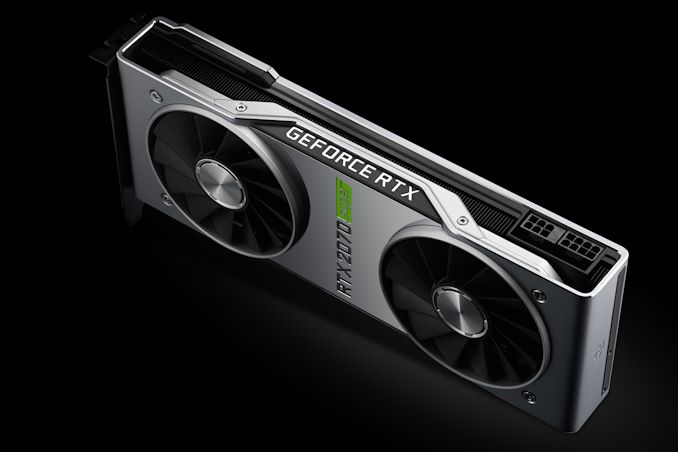
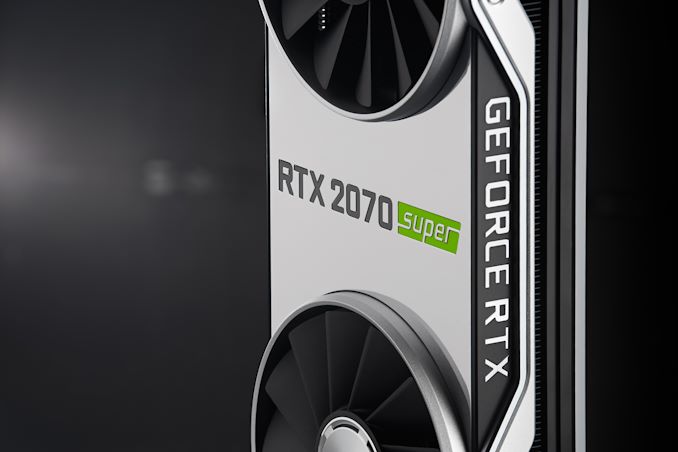
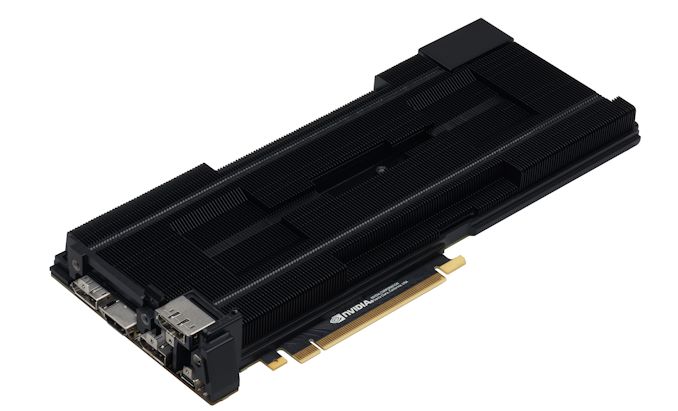

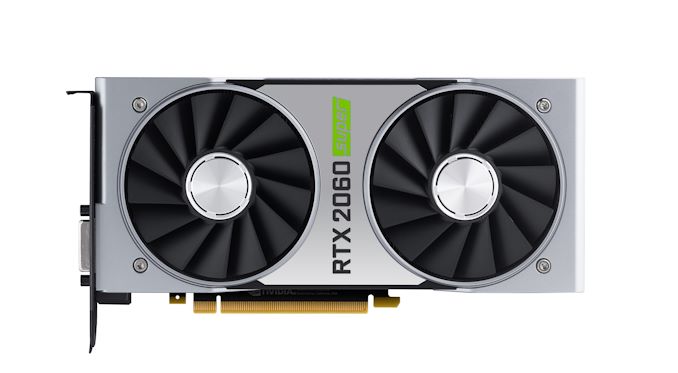
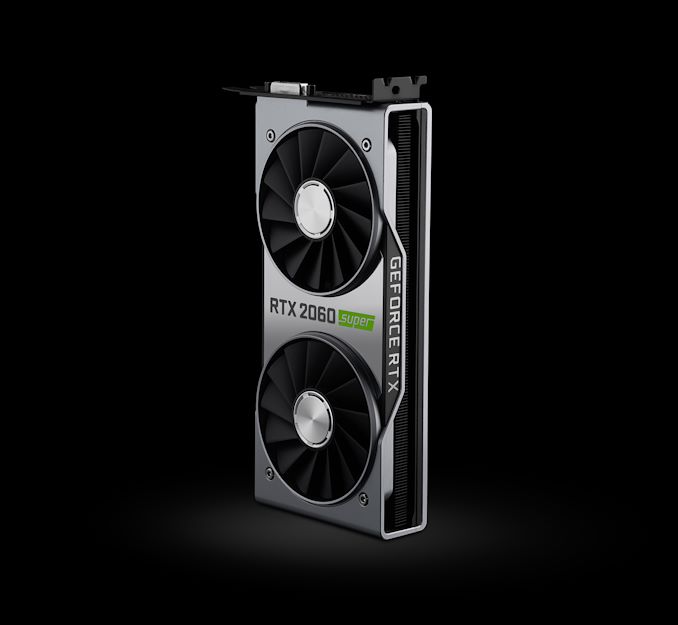









281 Comments
View All Comments
biodoc - Wednesday, July 3, 2019 - link
Thanks Ryan!Amoro - Tuesday, July 2, 2019 - link
So 215w TDP equals 302 watts normal gaming load. Right...Andrei Frumusanu - Tuesday, July 2, 2019 - link
The power measurements here are of the complete system, not just the GPU.Amoro - Tuesday, July 2, 2019 - link
My mistake. I take it back. I should read. It's actually really close then.Meteor2 - Saturday, July 6, 2019 - link
:-)dcole001 - Tuesday, July 2, 2019 - link
With the Benchmarks now finally out. Navi is DOA if they don't reduce pricing. Why would anyone buy 5700 XT that is going to have less performance and no hardware Raytrace Support. RTX 2070 Super is best value card out there. Got $100 price drop (Foundation Edition) and 15% boost in Performance. With very little overclocking you get the Performance of the RTX 2080 Standard Addition for $499!! Best Deal out there and it is the Founders Edition which has higher Quality GPU.Yojimbo - Tuesday, July 2, 2019 - link
Well, we haven't seen the Navi tests yet, but AMD will surely have to reduce pricing for it. That seems to be NVIDIA's thrust here. It's not the first time they've done it.V900 - Tuesday, July 2, 2019 - link
Doubt this release has anything to do with Navi.Nvidia has over 80% of the market, AMD isn’t really a concern. Heck, in the upper market level, it’s virtually a monopoly.
Nvidia’s problem is that Turing was “too good”, so many gamers out there are hanging on to their 1070’s and 1080’s and don’t see a reason to upgrade.
The Super RTX cards is aimed at those guys.
And I’m not so sure we will see a price cut for Navi.
A: They don’t have that much room to cut the price of Navi. Why risk canibalizing RX series sales?
B: At the current price, Navi gives them a fat, juicy margin. Lowering the price might move a few extra units, but hurt their total profits.
Yojimbo - Tuesday, July 2, 2019 - link
The timing shows it has a lot to do with Navi. NVIDIA only has a dominant market share as long as they defend it. Navi is AMD's most competitive product in a while, and it is currently targeting the most profitable part of the stack.We must see a price cut for Navi or they won't sell many and they will build up inventory. he other option is to stop making them, which doesn't do anything to reduce the fixed costs of r&d for the chip. AMD will try to maximize their profits/minimize their losses, or they might even try to gain some market share if the feel they are financially in good enough shape to do that. By RX sales do you mean Vega? There are hardly any Vega sales to begin with. They want Navi to be far more successful than Vega was. They will simply stop making Vega or take a write down on them if they have to in order to get Navi out the door.
At current price Navi gives them almost no profit because when you have minuscule sales but large r&d costs you can sell each one for $10,000 and still lose money. They must cut the price in order to turn any profit.
Meteor2 - Saturday, July 6, 2019 - link
Minimising losses may well be AMD's goal, I fear :-/